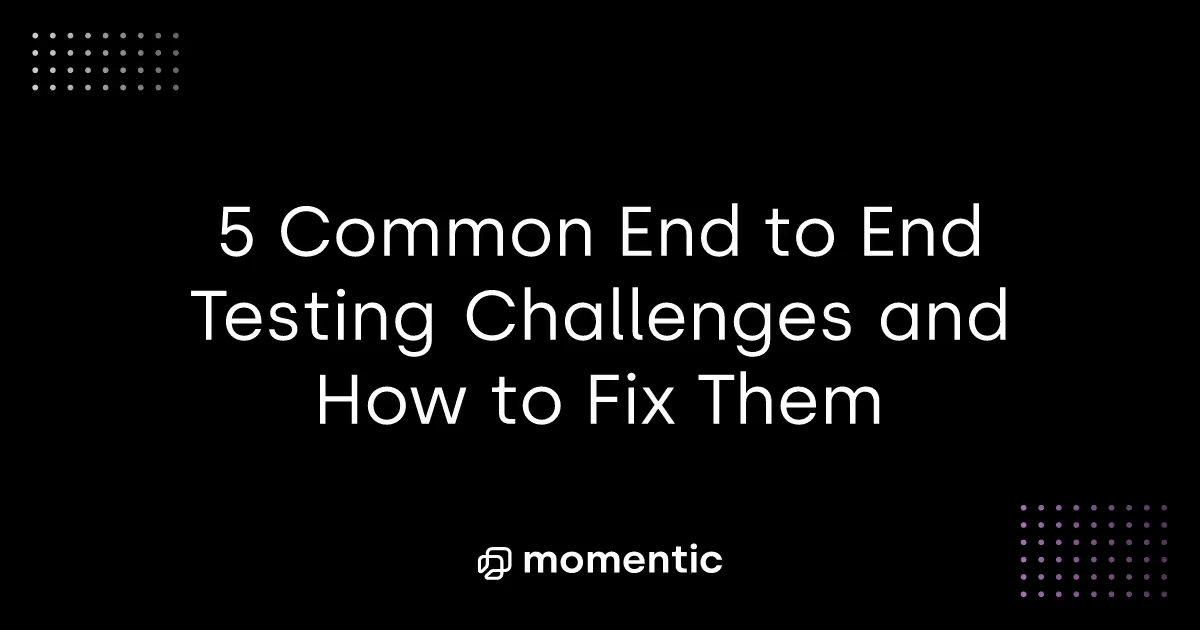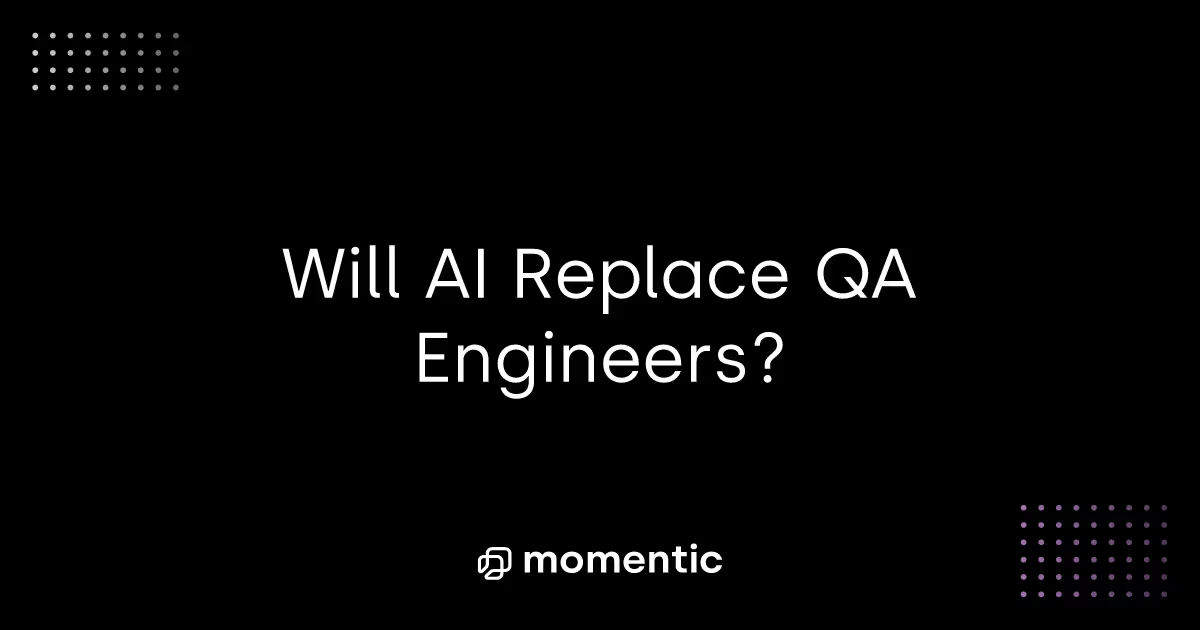“Unfortunately, this mistake also slipped through the review process and therefore made its way into the released version.” - Heartbleed
“Because of the complexity of our system and a blind spot in our tests, we did not spot this when the change was released to our test environment.” - Cloudflare
“The script had been run against our QA environment by the developer, without involving QA in testing the script.” - Microsoft
Quality dies when someone else owns it.
These failures weren't straightforward QA incompetence. They represent a well-worn problem in development: tooling and ownership lagging behind the pace of change.
At one point, we needed QA teams to bridge the gap between intention and execution, when testing tools were primitive, automation was brittle, and verifying complex systems required specialized expertise, but this came with exactly the outages, bugs, and diffusion of responsibility described above.
But now, quality no longer needs to be thrown over the wall. AI‑driven test platforms let the builders run all testing themselves, so the scapegoat can finally retire.
Why the Classic QA Function Became a Scapegoat
The comfort is seductive. Ship your code, mark the ticket "ready for QA," and move on to the next feature. Someone else will catch your mistakes.
This psychological safety net, knowing another team exists solely to find your bugs, fundamentally changes how engineers write code. Why spend an extra hour hardening error handling when QA will surface those edge cases anyway?
The incentives are backwards. QA teams get rewarded for finding defects, not preventing them. A tester who discovers zero bugs might seem redundant, while one who logs dozens appears invaluable. Success is measured by failure. The more broken the software, the more essential QA appears.
The costs compound in hidden ways:
- 35% of engineering spend tied up in manual QA headcount and infrastructure
- Each bug triggers another full test cycle
- Each handoff adds days to delivery
- Teams move at the speed of their slowest bottleneck
Ownership fragments across artificial boundaries. Developers own code. QA owns testing. DevOps owns deployment. When everyone owns a slice, no one owns the outcome. Bugs become hot potatoes. Engineers stop thinking holistically because they've been trained to care about just their piece.
Quality becomes someone else's problem. And when it's someone else's problem, it's nobody's priority.
Quality Through Extinction
Kill the QA team. Not out of malice, but out of mercy.
This allows for an immense psychological shift. The developer who once thought "I'll let QA find the rough edges" now thinks "this has to work in production." The code reviewer who skimmed for syntax now traces through failure paths. The architect who designed for the happy path now builds in resilience from day one. When there's no safety net, every decision carries weight. Quality has to become embedded in everything they do.
The mercy killing serves both sides.
- QA teams trapped in adversarial dynamics, forever proving their worth by finding failures, can finally escape the thankless role of professional pessimist. For those who can code, QA engineers can become high-quality software engineers, bringing their quality mindset directly into the codebase.
- Developers stuck in learned helplessness, outsourcing their conscience to another team, must reclaim their craft. Developers become whole engineers, owning their work from conception through production. The artificial boundary dissolves, and with it, the dysfunction it created.
Quality doesn't disappear; it distributes. It moves upstream into design decisions, pair programming sessions, and pull request reviews. It shifts from a phase to a philosophy. When everyone owns quality, quality thrives. When someone else owns it, quality dies.
Evolution, Not Neglect
Our predecessors weren't idiots. They were rational actors in an irrational system.
In 1995, dedicating a QA team was the only path to shipping reliable software. Manual test matrices. Week-long release trains. Developers coding in Notepad without syntax highlighting. Someone had to verify that the payment flow still worked after you changed the login screen. That someone became QA.
The tooling simply didn't exist to do it any other way. No continuous integration. No automated browser testing. No containerized environments. Just humans, spreadsheets, and the grim determination to click through every permutation before the Friday deploy.
But the ground has shifted beneath our feet. AI testing agents now parse your requirements and generate comprehensive test suites before lunch. They execute thousands of scenarios on every commit. They catch regressions that human testers, with their wandering attention spans and 2 PM energy crashes, routinely miss. They don't get bored clicking the same button for the hundredth time.
The numbers tell the story. Organizations burning 35% of engineering budgets on manual QA headcount. Test cycles measured in days, not minutes. Bugs slipping through because humans can't possibly test every edge case, every browser, every device combination. The old model is failing at its core promise.
When tests live in your IDE and run automatically in your pipeline, quality becomes ambient. It's not a gate at the end; it's the air you breathe while coding. The very concept of "throwing it over the wall to QA" becomes absurd when the wall no longer exists.
We’re now moving past “quality theater” to actual quality. The environment changed. The tools caught up. Time to evolve.
Four Ways AI Makes “You Build It, You Test It” Feasible
We can eliminate QA. We have the technology. Here's what changes when AI handles test generation and execution at the code level.
- Autonomous Test Generation. AI analyzes PR diffs and generates test suites in seconds. Not just happy paths, but edge cases, error states, and regression scenarios. The model understands code intent and automatically writes assertions that would take hours to craft manually.
- Continuous Execution at Scale. Every commit triggers intelligent test selection and parallel execution across all target environments. AI prioritizes tests based on code changes and historical failure patterns, delivering feedback in minutes instead of days.
- Semantic Element Selection. AI identifies UI elements by understanding application structure and user flows, not brittle CSS selectors or XPath. Tests survive refactors, style changes, and framework migrations because the AI grasps what the element does, not just where it lives in the DOM.
- Predictive Failure Analysis. Machine learning models trained on your codebase identify high-risk changes before merge. The system learns from past incidents, including which modules break together, which developers introduce certain bug patterns, and which times of day see more failures. Prevention replaces detection.
This is what Momentic is. The strongest QA for your product isn’t a QA team; it is your developers with Momentic.


